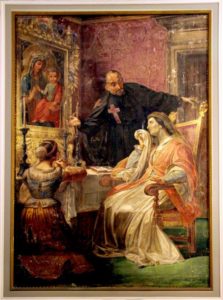 Fr. Cesare Simonio, one of the best contemporaries of the father Saint who loved him tenderly, conjoined with the burning zeal that he felt for the sick poor a no less holy transport for what concerned divine worship. Always a great disdainer of himself, he enjoyed being and appearing poor as regards his clothes and in his cell. Only when it came to the sacred temple did he allow himself to be seen with munificence and splendor. Most devoted to St. Mary Magdalene, he strove to ensure with ardor that the temple of that famous penitent left nothing to be desired as regards decency and decorum…And it is indeed to his piety and to his holy possessiveness that he nurtured for the devout objects that he constantly purchased that we the sons of St. Camillus must be grateful if we possess in the church that is dearest to the Order a miraculous picture of the most holy Mary which bears the title ‘Salus Infirmorum labaro glorioso della Congregazione della Madonna della Salute’ (‘Salus Infirmorum Glorious work of the Congregation of Our Lady of Health). The pious Fr. Simonio had been called to give the sacrament of reconciliation to a respectable lady who was his sick penitent, and thus it was that he caught sight of a devout painting depicting the Virgin with Child and at the same time there was ignited in his spirit an irresistible wish to take possession of it for his dear Church of St. Mary Magdalene.
Fr. Cesare Simonio, one of the best contemporaries of the father Saint who loved him tenderly, conjoined with the burning zeal that he felt for the sick poor a no less holy transport for what concerned divine worship. Always a great disdainer of himself, he enjoyed being and appearing poor as regards his clothes and in his cell. Only when it came to the sacred temple did he allow himself to be seen with munificence and splendor. Most devoted to St. Mary Magdalene, he strove to ensure with ardor that the temple of that famous penitent left nothing to be desired as regards decency and decorum…And it is indeed to his piety and to his holy possessiveness that he nurtured for the devout objects that he constantly purchased that we the sons of St. Camillus must be grateful if we possess in the church that is dearest to the Order a miraculous picture of the most holy Mary which bears the title ‘Salus Infirmorum labaro glorioso della Congregazione della Madonna della Salute’ (‘Salus Infirmorum Glorious work of the Congregation of Our Lady of Health). The pious Fr. Simonio had been called to give the sacrament of reconciliation to a respectable lady who was his sick penitent, and thus it was that he caught sight of a devout painting depicting the Virgin with Child and at the same time there was ignited in his spirit an irresistible wish to take possession of it for his dear Church of St. Mary Magdalene.
This sacred icon of Mary with child was hung on a spacious wall in the room of this illustrious sick Roman lady, with around it a sparkling heart and other devout objects of silver that reflected in that room the light of some elegant and valuable lamps. The good Minister of the Sick was greatly attracted to it and the gaze of his eyes fixed on it in an almost ecstatic way, and in his heart…he had already taken it. On hearing the news that this painting was the work of the brush of Angelico Fra Giovanni da Fiesole, the picture seemed to him even more beautiful; it seemed more devout to him when he heard that it had belonged to the Supreme Pontiff Pius V, and when he heard it said that it had revealed to that Supreme Ecclesiastic the victor of the Christian army over the Turks in the waters of Lepanto he was overwhelmed by super-human feelings of veneration; he bent down and prostrated himself to venerate it and gave expression to his burning heart.
The soul of Fr. Simonio was possessed by the most noble feelings of piety, the most burning wishes of his heart; zeal made itself felt even more; he stared at the painting…he thought of his Church; he looked at the lady and wanted to be understood without unbuttoning himself…finally, he opened up and with his innate sincerity he said to her: “Such a beautiful painting of the Most Holy Mary and her Divine Child should have greater decorum in a temple shown to a public of the faithful and if you granted it to us…it would be a great ornament in our Church and greater glory to the Lord”. But the pious lady in her heart could not contemplate such a great sacrifice as long as she lived, and thus she replied that only on her death would she have met the holy wishes of her venerated Confessor.
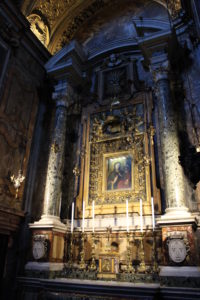 Satisfied, although not completely, Fr. Simonio thanked her and went away…Would he be able to persuade himself that in the future his Church could recover that famous picture of Mary without his penitent dying? This, in fact, is what actually happened.
Satisfied, although not completely, Fr. Simonio thanked her and went away…Would he be able to persuade himself that in the future his Church could recover that famous picture of Mary without his penitent dying? This, in fact, is what actually happened.
That pious lady after that albeit delicate and conditional refusal appeared more greatly troubled by her malady; more severe pains in her head tested her, her temperature was more severe, the whole night was spent with great tribulations unlike what was usual. To her physical woes were added worries of the spirit…and she, pious as she was, persuaded herself that this chalice of bitterness had come to her because of her refusal of her pious confessor. Very early the next day Fr. Simonio was called to the bedside of the lady; he thought that he had been called because the sick lady once again needed his spiritual help or because she feared that some catastrophe was near to her. But great was his surprise when on presenting himself to her he heard her repeat in humble tones that she implored his forgiveness and with prayerful feelings asked him whether he wanted to take with him that painting with all the precious objects with which it was adorned. Fr. Simonio answered by thanking her and with words of comfort told her that Our Lady for that deed which was so heroic would have helped her with her troubles with generosity and more. In fact, the pious lady who had offered the painting obtained together with her peace of mind also health of her body, not without evident wonder. As a result of which that good Minister of the Sick, full of admiration for that great goodness of Mary, when offering it for public veneration wisely decided to give to that wonderful picture the title ‘Mary Salus Infirmorum’.



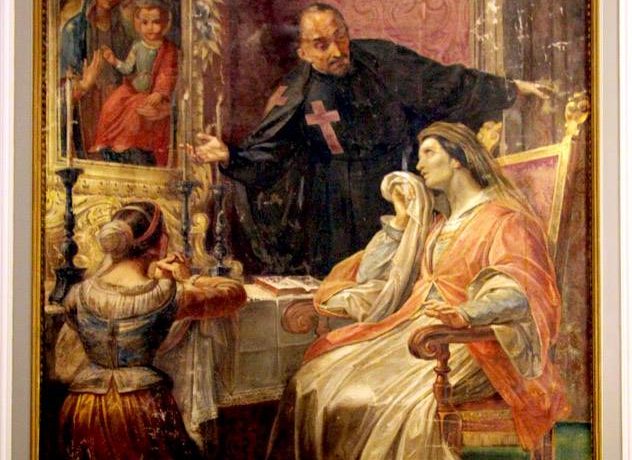






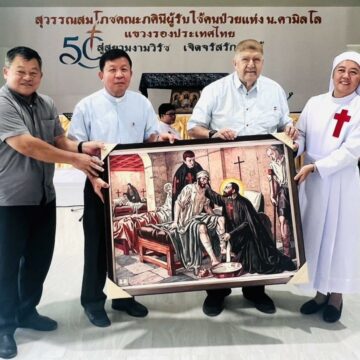
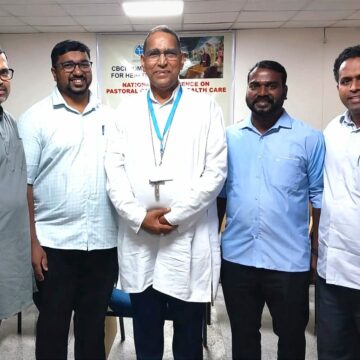


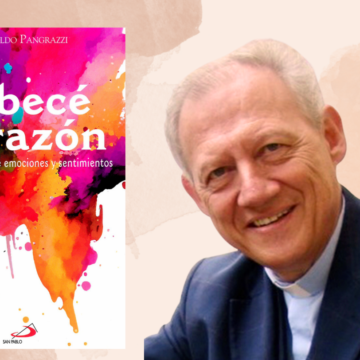
Camillians on Facebook
Camillians on Twitter
Camillians on Instagram